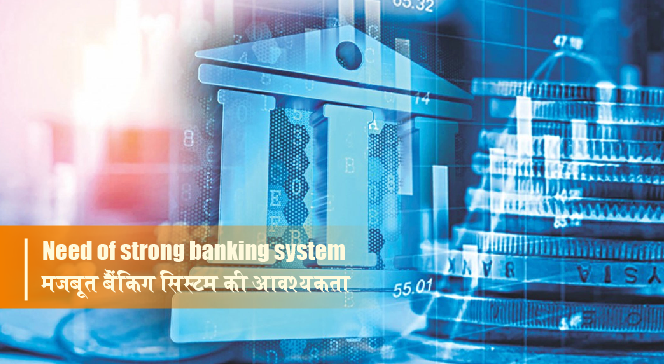
Inflation Worries by Sharp Rise in Crude Oil , Gas Prices & Power Outages
- अक्टूबर 23, 2021
- 0
After interest rate hike by the world’s major central bank and tapering of bond buying by the US Federal Reserve (Fed), inflation is the latest worry for markets and the world economy. The fear of higher inflation has been worsened by a sharp rise in natural gas prices in Europe, power outages in the UK and China, and a rally in crude oil prices.
Brent crude oil prices have risen nearly 20 per cent in the past month to hit $80 a barrel on commodity exchanges, a three-year high. Due to this, the price of crude oil imported by India will increase, forcing the oil marketing companies to increase the fuel prices. Thereafter, there will be further increase in retail or consumer inflation. Higher crude oil prices will also increase costs for consumer goods companies. Analysts say corporate margins will also fall if input prices rise under the influence of oil prices.
According to analysts, “A sharp rise in global energy prices and prospects of increased prices could pose another risk to global and domestic inflation.” Markets have been optimistic about inflation being short-lived. However, due to the current supply-based disruptions in various commodities, inflation may last longer than expected.
Historically, there has been a positive correlation between Brent crude oil prices and overall inflation in India.
According to statistics, the price of Brent crude oil doubled between 2005 and 2011. During the same period, overall inflation in India increased from 4.6 per cent in 2005-06 to around 10 per cent in 2010-11. Similarly, there was a sharp decline in inflation after 2012 due to reduction in crude oil prices across the world.
The chief strategist also says, “Europe and China are witnessing rapid increase in power cost, which has increased the operating cost of the manufacturers. In addition, the current COVID-19 disruption in the global supply chain could lead to further inflation in manufactured and consumer goods.
मुद्रास्फीति की गिरफ्त में फंसे बाजार और अर्थव्यवस्थाएं
दुनिया के प्रमुख केंद्रीय बैंक की ओर से ब्याज दर में वृद्घि किए जाने और यूएस फेडरल रिजर्व द्वारा बॉन्ड की खरीद कम किए जाने के बाद बाजारों और विश्व अर्थव्यवस्था के लिए मुद्रास्फीति एक नई चिंता के तौर पर उभर कर सामने आ गई है। यूरोप में प्राकृतिक गैस की कीमत में तेज वृद्घि, ब्रिटेन और चीन में बिजली कटौती तथा कच्चे तेल की कीमतों में तेजी आने से उच्च मुद्रास्फीति का भय चरम पर पहुंच गया है।
पिछले महीने में ब्रेंट क्रूड तेल की कीमतें करीब 20 फीसदी चढ़ी हैं और यह कमोडिटी एक्सचेंजों पर 80 डॉलर प्रति बैरल पर पहुंच गई जो कि तीन वर्ष का उच्चतम स्तर है। इसके कारण भारत द्वारा आयात किए जाने वाले कच्चे तेल की कीमत बढ़ेगी जिससे मजबूर होकर तेल विपणन कंपनियां ईंधन कीमतों में इजाफा करेंगी। इसके बाद खुदरा या उपभोक्ता महंगाई में और अधिक इजाफा होगा। कच्चे तेल की उच्च कीमतों के कारण उपभोक्ता सामान बनाने वाली कंपनियों की लागत में भी इजाफा होगा। विश्लेषकों का कहना है कि तेल कीमतों के प्रभाव से इनपुट कीमत बढऩे पर कॉर्पोरेट मार्जिन में भी गिरावट आएगी।
विश्लेषकों के अनुसार, ‘वैश्विक ऊर्जा कीमतों में तेज वृद्घि और बढ़ी हुई कीमतों की संभावनाओं से वैश्विक और घरेलू महंगाई पर एक और जोखिम पड़ सकता है। मुद्रास्फीति के अल्पकालिक होने को लेकर बाजार आशावादी रहे हैं। हालांकि, विभिन्न जिंसों में आपूर्ति आधारित मौजूदा व्यवधानों के कारण मुद्रास्फीति उम्मीद से अधिक समय तक रह सकती है।’
ऐतिहासकि तौर पर ब्रेंट क्रूड तेल कीमतों और भारत में समग्र महंगाई के बीच सकारात्मक अंतर्संबंध रहा है।
आंकड़ों के मुताबिक ब्रेंट क्रूड तेल की कीमत 2005 और 2011 के बीच दोगुनी हो गई। इसी दौरान भारत में समग्र महंगाई 2005-06 के 4.6 फीसदी से बढ़कर 2010-11 में करीब 10 फीसदी हो गई। इसी तरह से दुनिया भर में कच्चे तेल की कीमतों में कमी आने पर 2012 के बाद महंगाई में तेज गिरावट दर्ज की गई।
मुख्य रणनीतिकार यह भी कहते हैं, ‘यूरोप और चीन में बिजली लागत में तेजी से इजाफा हो रहा है जिससे विनिर्माताओं की परिचालन लागत बढ़ी है। इसके अलावा वैश्विक आपूर्ति शृंखला में मौजूदा कोविड-19 व्यवधान से भी विनिर्मित और उपभोक्ता सामानों में और अधिक मुद्रास्फीति नजर आ सकती है।’
![]()

![]()
































































